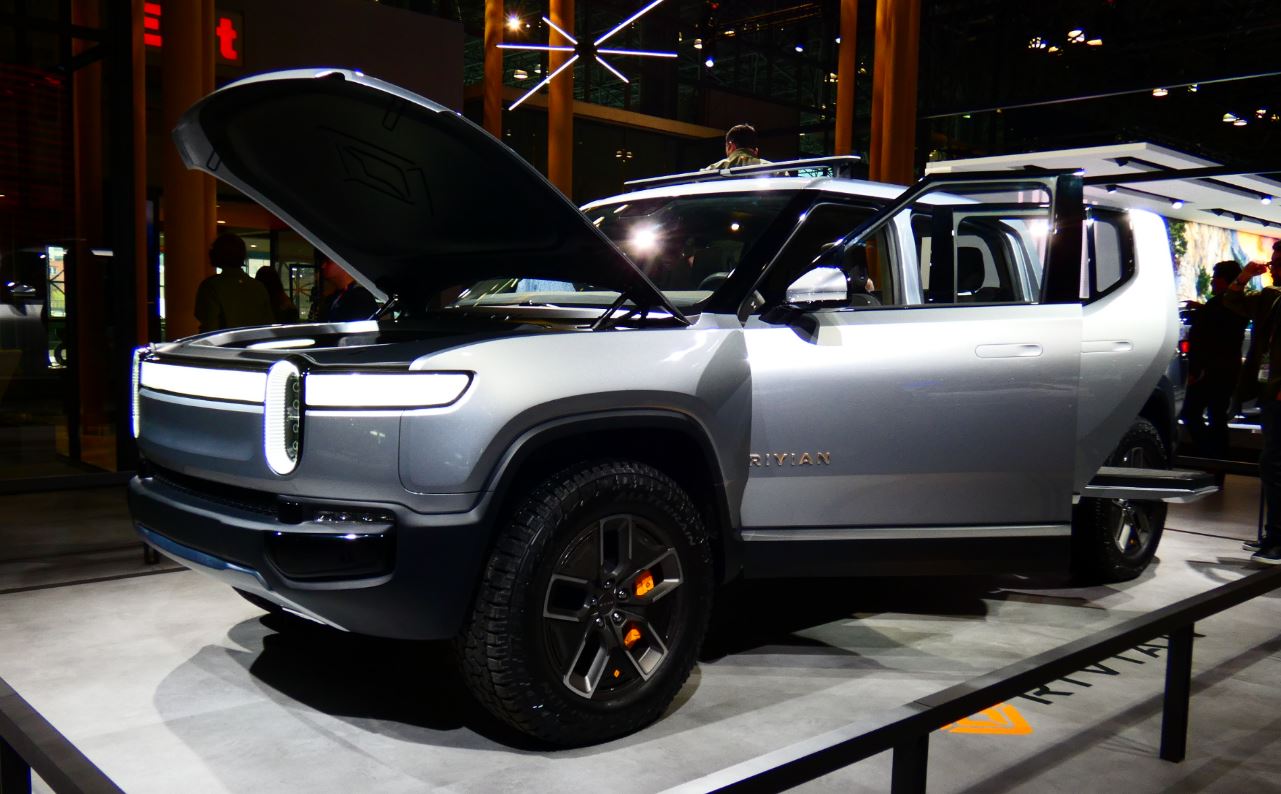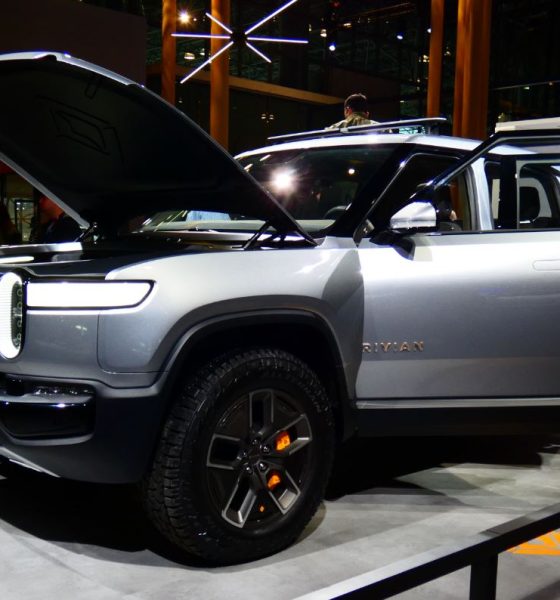

News
Tesla alumnus replaces ex-McLaren exec as Rivian’s new VP of engineering
It appears that Rivian Automotive recently welcomed yet another employee with an extensive background in Tesla. As indicated in a recent Bloomberg report, Nick Kalayjian, who spent over a decade at Tesla, will be joining Rivian as the company’s new vice president of engineering and product. Kalayjian will be replacing Mark Vinnels, a former McLaren executive who joined Rivian in 2017.
A Rivian spokesperson has confirmed that Vinnels has indeed left the company, though the Michigan-based electric truck maker did not specify how recently his departure happened. Both Kalayjian and Vinnels could not be reached for comment by the publication. Rivian has also not released a statement about its new VP of engineering and product.
Kalayjian will have big shoes to fill at Rivian, especially considering his predecessor’s formidable and extensive automotive background. Mark Vinnels, after all, is a veteran, and during his time with McLaren, he was in charge of several key projects like the design and development of vehicles like the 650S, 675LT, 570S, and even the critically-acclaimed 720S.
That being said, Kalayjian’s background in electric vehicles is extensive. As could be seen in his LinkedIn profile, he was involved in the development of the original Model S powertrain from the architecture phase to volume manufacturing. He was later promoted to VP of Engineering, where he served as a key figure in the Model 3 ramp.
It should be noted that Kalayjian is not coming over to Rivian directly from Tesla. He left the Elon Musk-led company in 2018 to work as the SVP of Engineering at Plenty, which develops indoor farming technologies. Since last month, Kalayjian also serves as a Board Advisor for Plenty.
Both Rivian and Tesla are aiming to breach and potentially establish a mark at the lucrative pickup truck segment. Rivian’s R1T debuted to critical acclaim, and expectations are high for the vehicle’s start of deliveries next year. Tesla is also aiming to release the Cybertruck late 2021, though much of this goal relies on the rapid buildout of Gigafactory Texas.
Interestingly enough, Tesla and Rivian are currently involved in a lawsuit over alleged thefts of trade secrets. In its complaint, Tesla noted that it has no issue with former employees going over to companies like Rivian, but it draws the line when former staff break NDA and share proprietary information with their new employers. So far, Tesla has accused Rivian of stealing sensitive information related to its recruiting processes, bonus and compensation plans for sales personnel, and manufacturing project management systems, to name a few.
Rivian, for its part, has denied Tesla’s claims. The company has asked a judge to dismiss Tesla’s claims, and it has argued that the Silicon Valley-based EV maker’s claims fail to state sufficient allegations of trade secret theft. Rivian’s legal team further argued that Tesla did not really file its case to defend or protect any legitimate intellectual property rights. Instead, it was an attempt to slow down Rivian’s momentum and damage its brand, while discouraging employees to leave the company.

News
Tesla FSD fleet is nearing 7 billion total miles, including 2.5 billion city miles
As can be seen on Tesla’s official FSD webpage, vehicles equipped with the system have now navigated over 6.99 billion miles.

Tesla’s Full Self-Driving (Supervised) fleet is closing in on almost 7 billion total miles driven, as per data posted by the company on its official FSD webpage.
These figures hint at the massive scale of data fueling Tesla’s rapid FSD improvements, which have been quite notable as of late.
FSD mileage milestones
As can be seen on Tesla’s official FSD webpage, vehicles equipped with the system have now navigated over 6.99 billion miles. Tesla owner and avid FSD tester Whole Mars Catalog also shared a screenshot indicating that from the nearly 7 billion miles traveled by the FSD fleet, more than 2.5 billion miles were driven inside cities.
City miles are particularly valuable for complex urban scenarios like unprotected turns, pedestrian interactions, and traffic lights. This is also the difference-maker for FSD, as only complex solutions, such as Waymo’s self-driving taxis, operate similarly on inner-city streets. And even then, incidents such as the San Francisco blackouts have proven challenging for sensor-rich vehicles like Waymos.
Tesla’s data edge
Tesla has a number of advantages in the autonomous vehicle sector, one of which is the size of its fleet and the number of vehicles training FSD on real-world roads. Tesla’s nearly 7 billion FSD miles then allow the company to roll out updates that make its vehicles behave like they are being driven by experienced drivers, even if they are operating on their own.
So notable are Tesla’s improvements to FSD that NVIDIA Director of Robotics Jim Fan, after experiencing FSD v14, noted that the system is the first AI that passes what he described as a “Physical Turing Test.”
“Despite knowing exactly how robot learning works, I still find it magical watching the steering wheel turn by itself. First it feels surreal, next it becomes routine. Then, like the smartphone, taking it away actively hurts. This is how humanity gets rewired and glued to god-like technologies,” Fan wrote in a post on X.
News
Tesla starts showing how FSD will change lives in Europe
Local officials tested the system on narrow country roads and were impressed by FSD’s smooth, human-like driving, with some calling the service a game-changer for everyday life in areas that are far from urban centers.

Tesla has launched Europe’s first public shuttle service using Full Self-Driving (Supervised) in the rural Eifelkreis Bitburg-Prüm region of Germany, demonstrating how the technology can restore independence and mobility for people who struggle with limited transport options.
Local officials tested the system on narrow country roads and were impressed by FSD’s smooth, human-like driving, with some calling the service a game-changer for everyday life in areas that are far from urban centers.
Officials see real impact on rural residents
Arzfeld Mayor Johannes Kuhl and District Administrator Andreas Kruppert personally tested the Tesla shuttle service. This allowed them to see just how well FSD navigated winding lanes and rural roads confidently. Kruppert said, “Autonomous driving sounds like science fiction to many, but we simply see here that it works totally well in rural regions too.” Kuhl, for his part, also noted that FSD “feels like a very experienced driver.”
The pilot complements the area’s “Citizen Bus” program, which provides on-demand rides for elderly residents who can no longer drive themselves. Tesla Europe shared a video of a demonstration of the service, highlighting how FSD gives people their freedom back, even in places where public transport is not as prevalent.
What the Ministry for Economic Affairs and Transport says
Rhineland-Palatinate’s Minister Daniela Schmitt supported the project, praising the collaboration that made this “first of its kind in Europe” possible. As per the ministry, the rural rollout for the service shows FSD’s potential beyond major cities, and it delivers tangible benefits like grocery runs, doctor visits, and social connections for isolated residents.
“Reliable and flexible mobility is especially vital in rural areas. With the launch of a shuttle service using self-driving vehicles (FSD supervised) by Tesla in the Eifelkreis Bitburg-Prüm, an innovative pilot project is now getting underway that complements local community bus services. It is the first project of its kind in Europe.
“The result is a real gain for rural mobility: greater accessibility, more flexibility and tangible benefits for everyday life. A strong signal for innovation, cooperation and future-oriented mobility beyond urban centers,” the ministry wrote in a LinkedIn post.
News
Tesla China quietly posts Robotaxi-related job listing
Tesla China is currently seeking a Low Voltage Electrical Engineer to work on circuit board design for the company’s autonomous vehicles.

Tesla has posted a new job listing in Shanghai explicitly tied to its Robotaxi program, fueling speculation that the company is preparing to launch its dedicated autonomous ride-hailing service in China.
As noted in the listing, Tesla China is currently seeking a Low Voltage Electrical Engineer to work on circuit board design for the company’s autonomous vehicles.
Robotaxi-specific role
The listing, which was shared on social media platform X by industry watcher @tslaming, suggested that Tesla China is looking to fill the role urgently. The job listing itself specifically mentions that the person hired for the role will be working on the Low Voltage Hardware team, which would design the circuit boards that would serve as the nervous system of the Robotaxi.
Key tasks for the role, as indicated in the job listing, include collaboration with PCB layout, firmware, mechanical, program management, and validation teams, among other responsibilities. The role is based in Shanghai.
China Robotaxi launch
China represents a massive potential market for robotaxis, with its dense urban centers and supportive policies in select cities. Tesla has limited permission to roll out FSD in the country, though despite this, its vehicles have been hailed as among the best in the market when it comes to autonomous features. So far, at least, it appears that China supports Tesla’s FSD and Robotaxi rollout.
This was hinted at in November, when Tesla brought the Cybercab to the 8th China International Import Expo (CIIE) in Shanghai, marking the first time that the autonomous two-seater was brought to the Asia-Pacific region. The vehicle, despite not having a release date in China, received a significant amount of interest among the event’s attendees.








